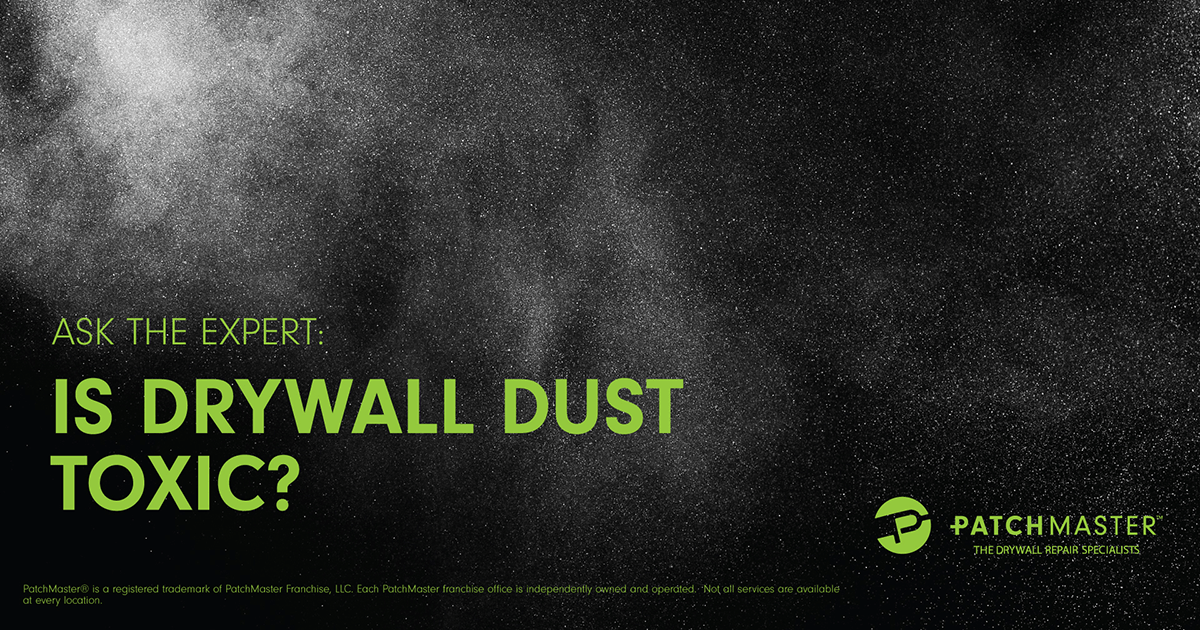Drywall dust is a common byproduct of construction and renovation projects using drywall. When drywall is cut, sanded, or installed, drywall dust can easily become airborne, leading to potential health risks for those exposed to it. This article will explore whether drywall dust is toxic and examine the risks associated with exposure.
What is Drywall?
Drywall, also known as gypsum board or plasterboard, is a panel made of gypsum plaster compressed between two thick sheets of paper. It is commonly used in interior construction projects as a wall and ceiling material due to its ease of installation and affordability. Drywall panels are typically cut to size and installed using screws or nails. Once installed, panels are typically covered with joint compound and sanded to create a smooth surface for painting or wallpapering.
What is Drywall Dust?
Drywall dust is a fine, powdery substance created when drywall is cut, sanded, or installed. It comprises gypsum dust and paper fibers from the drywall panels and can quickly become airborne during construction or renovation projects. When drywall dust is in the air, it can be inhaled or ingested, leading to potential health risks for those exposed.
Is Drywall Dust Toxic?
Although the Occupational Safety and Health Administration (OSHA) has not classified drywall dust as a toxic substance, exposure to high levels of drywall dust can cause respiratory issues such as coughing, wheezing, and shortness of breath. It can also lead to eye and skin irritation, headaches, and allergic reactions.
The severity of these health risks depends on the length and intensity of exposure and individual sensitivity. The primary health risk associated with drywall dust is respiratory irritation. When inhaled, the dust can irritate the nose, throat, and lungs, leading to coughing, sneezing, and shortness of breath. In some cases, exposure to drywall dust can trigger asthma attacks or other respiratory conditions. Commonly, people can be allergic to drywall dust, which they may only realize once they have started an ill-fated DIY project.
In addition to respiratory irritation, drywall dust can also cause skin and eye irritation if it comes into contact with these areas. This type of irritation can lead to itching, redness, and inflammation in the person being affected by the drywall dust.
Drywall dust presents another potential health risk due to silica, a common mineral in rocks and soils, including gypsum. Cutting or sanding drywall releases silica particles into the air. Inhaling large quantities of silica can result in the development of silicosis, a lung disease that can be fatal.
It is important to note that the risks associated with drywall dust are primarily associated with large amounts of dust exposure, such as during construction or renovation. For individuals exposed to drywall dust regularly, such as construction workers, it is essential to take proper precautions to minimize exposure and protect against potential health risks. These factors prove why hiring PatchMaster for your drywall repair is a smart choice to protect your home and yourself during the repair process.
How PatchMaster Minimizes Exposure to Drywall Dust During a Repair
There are several steps PatchMaster‘s expertly trained drywall repair specialists take to minimize your exposure to drywall dust during a drywall repair.
These include:
- Use of proper protective equipment: PatchMaster’s drywall repair specialists commonly wear respiratory protection, such as a respirator or dust mask, to protect against inhaling drywall dust. They may also wear goggles or other eye protection to prevent dust from entering the eyes.
- Wet sanding techniques: We wet sand to minimize the drywall dust generated in your home or office during the sanding process.
- Dust control measures: We use state-of-the-art sanders to capture drywall dust before it becomes airborne, providing near-dustless repair.
- Prompt clean up of dust: Any residual drywall dust is cleaned up promptly to prevent it from becoming airborne.
Contact PatchMaster for Your Drywall Repair Project
Although classifying drywall dust as toxic is inaccurate, it poses potential health risks to those exposed. The primary health risk of drywall dust is respiratory irritation, which can also cause skin and eye irritation. PatchMaster takes the proper precautions and safety measures needed to minimize these risks and ensure the safety of our customers during the repair process.
Please contact PatchMaster today to schedule your no-obligation drywall repair services estimate. You can reach us at 1-844-PATCH-MAN (US) or 1-833-WE-PATCH (Canada). We look forward to hearing from you!

